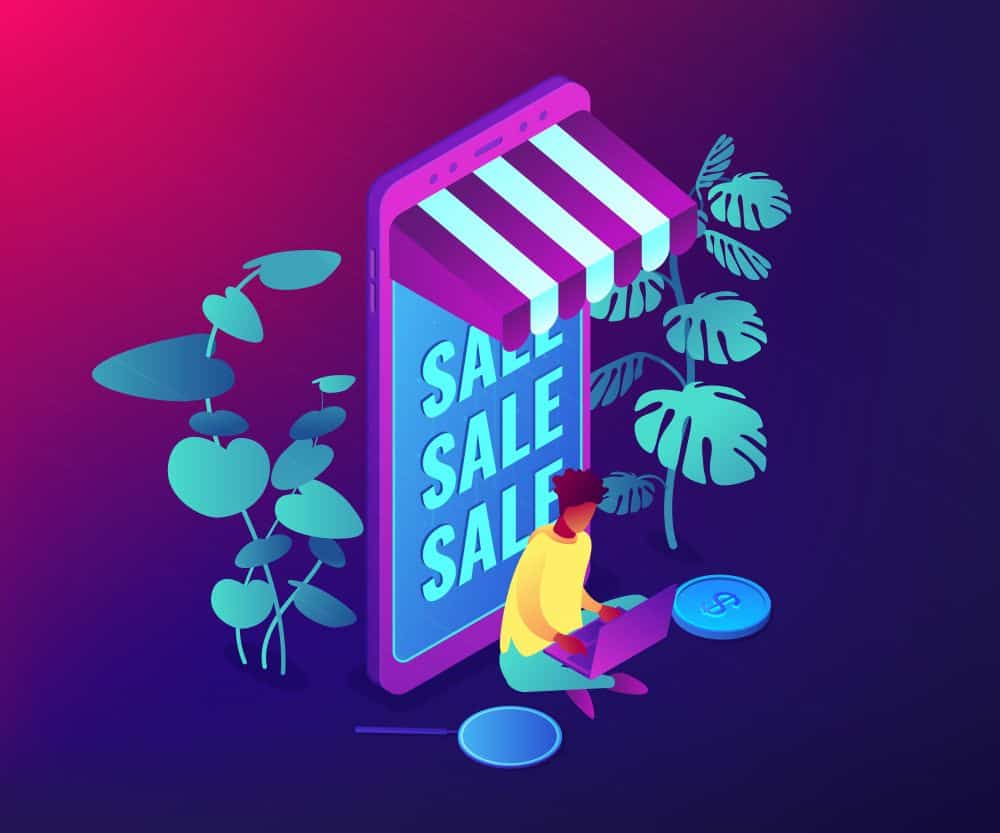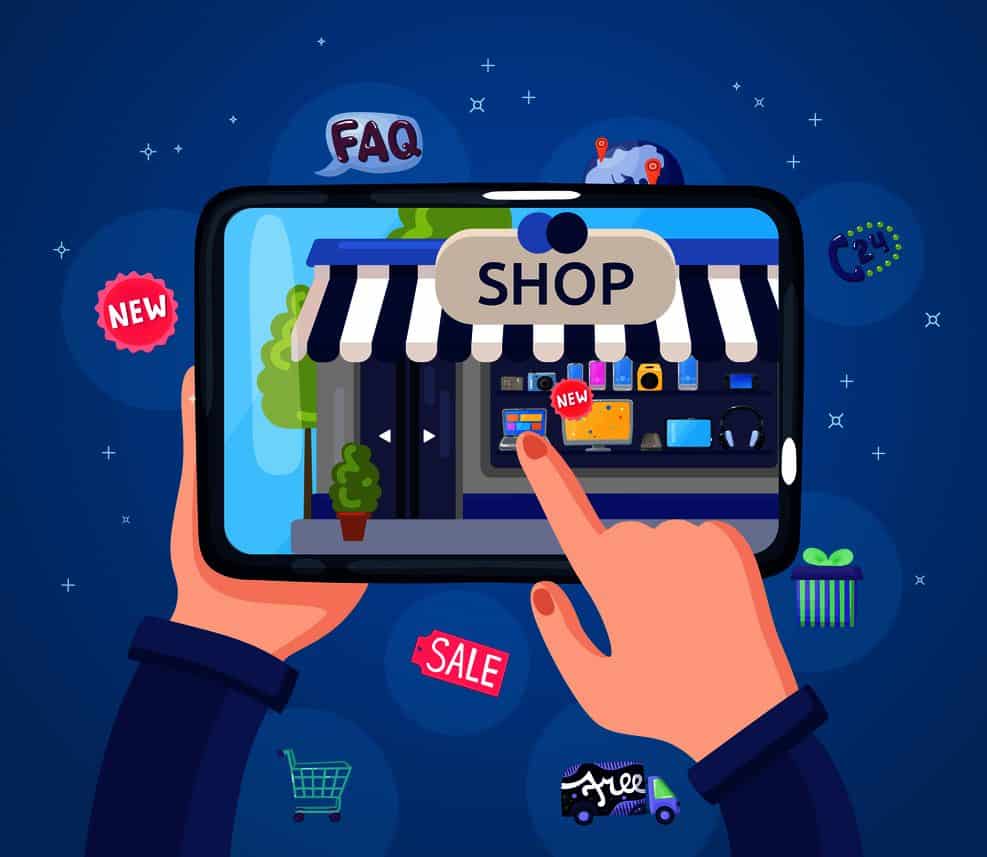
Online shopping is such an attractive option these days that the potential drawbacks are easy to overlook. At least if you think of drawbacks in terms of not getting the right color. Or the right size. Or the fabric quality you were hoping for. But how about not getting what you’ve paid for, period? Or becoming a victim of phishing attacks?
As bad as they sound, unfortunately, these aren’t even the worse that can happen. It turns out that ignoring the basic online shopping safety rules can be even more expensive. Expensive as in dealing with a malware infection. Or credit card frauds. Or ransomware attacks. That’s what you should be really fear for.
Now, without getting paranoid, people spend billions of dollars online, month after month. And they do so because most online transactions are, indeed, uneventful. But to that small percentage (compared to the entire pie) of people who become victims of online shopping fraud? To them, the threat is more real than they ever hoped it would be.
Don’t you think it would be nice not to be one of them?
After all, it’s not that hard to stay safe. There are basic things you can do when you shop online. From choosing where to shop from to choosing how to approach your online shopping profile. Once you grasp the following tips for safe online shopping, it should all be a routine for you.
We even did the whole research for you and summed it all up to 7 tips that are bound to keep you safe. Knowing them all and striving to put them into practice isn’t on the list, but it goes without saying. Other than that, here’s what we strongly advise you to do before hitting the buy button.
1.Connect from a secured network, every single time
Knowing and trusting the network from where you connect to the internet is essential. Every single time you go online, not just when you shop. However, because when you shop you type sensitive information, a secured network is essential.
Wi-Fi sniffing and Man-In-The-Middle attacks are so common with public Wi-Fi hotspots. And we’ve talked many times before about the dangers of unsecured Wi-Fi. So, because of all the risks that come from using a compromised network, this is the number one online shopping safety tip.
Suffices to say that using a public hotspot for your online shopping sessions is a terrible idea. Even if it’s a known network, like the one from Starbucks, you’d better be cautious. At the very least, make sure you use a VPN with your connections.
2.Choose the most familiar website, whenever you can
You obviously cannot do all your shopping from Amazon. Even if you could, you probably shouldn’t. Still, if you have to choose between a very popular (or at least a familiar) website and a shady one, go with the most popular.
If you know the site, it is less likely to be a rip-off. Use a price comparison tool to see how the products you’re searching for match up against other websites. And if price differences are acceptable, always go for the more popular website. If it’s a rock-bottom price on a shady website, even more reasons to stay away from it.
One thing to pay special attention to is the URL. In other words, beware of misspelled URLs or sites with any top-level domain other than .com. There are plenty of spoofed websites that bet on such simple tricks. So, making sure you’re on the right website is one of the basic online shopping safety precautions.
3.Shop from websites with SSL, without exception
SSL, HTTP, HTTPS aren’t just a bunch of nonsense abbreviations. Websites that benefit from Secure Sockets Layer encryption provide you with some kind of security when it comes to exchanging sensitive information with them.
We put this high on our list of tips for safe online shopping for a very obvious reason. If there’s no SSL encryption installed, the data you send (meaning your personal details and credit card details) can be easily intercepted by hackers.
Long story short, only shop online on websites with SSL. If the URL doesn’t have the locked padlock icon in the address bar or the HTTPS (but only an HTTP), never ever introduce your credit card details.
4.Let a security suite have your back, online and offline
We call them online shopping safety tips but they don’t all sum up to the online. You’ll see, there are plenty of things you can do offline, for a more secure online experience. For starters, protect your device against the malware that could try to infect you when accessing shady shopping websites.
If you have this habit of paying online often, you’d better invest in a lot more than the standard AV software. Use an advanced security suite that will protect you from spam, website phishing attacks, spear-phishing emails, and even identity theft.
Most antivirus packages include, these days, a secured browser for online payments, which you should definitely use. Needless to say, keeping that security suite up to date is essential!

5.Trust the power of a good password, though not for too long
Part of learning how to make online shopping safe implies learning how to make your online shopping accounts safe. In this chapter, there are actually three main rules that we’re going to cram into the power of a good password.
- Separate your work accounts from your personal accounts.
- Set up strong, unique passwords with every single account and reset them frequently.
- Enable the strongest authentication options you have at hand, for each online account.
Secure passwords are a great start, but no password is perfect. That’s why you’ll be focusing on changing even those passwords you consider unhackable, at least once a year.
Then, go ahead and make use of all the extras you can get – security keys, one-time unique codes generated by apps on your mobile, biometrics etc. In short, take the most protection you can get because hackers can’t wait for you to pass on it.
6.Be stingy with the personal information you share, without regrets
It might be hard, especially if you’re not the stingy type of person, in general. But know that even the safe online shopping sites can sometimes be compromised. For this reason, it’s best if you have as little personal information stored on their servers as possible.
The more data scammers can get about you, the easier they can orchestrate attacks or even identity theft attempts. So, stick to the minimum information required by the online seller. And don’t allow them to impress you with their online security. Let them be a safe platform and still don’t trust sharing with them more than you need to.
7.Stop dangling your credit card in public, use your phone instead
Hold on, we’re still talking about how to make online shopping safe. The part with dangling your credit card has to do with the online. What we’re trying to say is that unless you’re paying for a latte or a burger, you should keep your credit card tucked in the wallet.
Even if you’re using your laptop and a secured connection? Yes, when you’re in a public place, it is best to make purchases from websites you know and where your credit card is already stored. If you take out your credit card in a public place and start looking over its details, anyone else around you can do the same.
Card skimmers are real and you should avoid getting in their way. Use the phone instead of the card. Dedicated mobile payment apps, when developed by a trusted developer like Google Pay or Apple Pay, are a safe option.
When you think you’re done, you’re almost done!
The good practices of online shopping safety don’t just end the moment you hit the buy button. In fact, even when you’re pretty sure you did everything right, there are a few other things to keep in mind.
One of them is to keep at hand all the details of your online transactions. Whether it’s an order status link, an order confirmation number, a postal tracking number, or the receipt, keep it close. Whenever you encounter problems with the delivery, you should be able to provide the seller with all these details, for clarification, ASAP.
If you don’t get the goods you’ve paid for and the seller isn’t willing to help, the credit card provider might do it. Don’t hesitate to ask them to remove the charge from your credit card statement, if there’s no other solution. And don’t forget to file a complaint with the trade commission in your country, signaling that the merchant is intentionally a wrongdoer.
Last but not least, when everything seems fine and you’ve got what you paid for… Keep an eye on your statements. In fact, check those statements regularly. Don’t wait for the end of the month to look over your bills and payment records. Make a habit of checking them weekly and notify the bank or the third-party payment service you’ve used as fast as you notice something strange in your records.
To draw a conclusion, if you really care about your online security, you’d better put all these online shopping safety tips into practice. Do that and chances are you won’t be the victim of one of those hacker attacks that take place worldwide, every 39 seconds!






